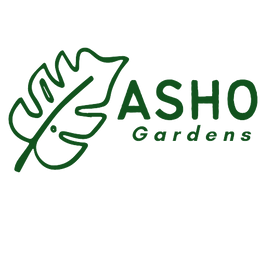




200+ Ajuga Reptans Groundcover Seeds-Good for Erosion Control- Creeping Buglewood-Shade Loving Evergreen Perennial Medicinal Plant-B379
200+ Ajuga Reptans Groundcover Seeds-Good for Erosion Control- Creeping Buglewood-Shade Loving Evergreen Perennial Medicinal Plant-B379
Description:
Bugleweed is a fast-growing ground cover, an evergreen perennial that usually creeps within just a few inches of the ground (the species name, reptans, means “ Creeping” Ajuga is excellent for filling in large, shady areas where lawns are difficult to grow, and it can work well on banks or slopes, or planted around trees and shrubs. It forms a dense mat that will choke out weeds, and it is known to be fairly resistant to deer. When you’re looking for something attractive to quickly fill in a large area, then you can’t go wrong with ajuga (Ajuga reptans) This creeping evergreen plant quickly fills in empty areas, while adding exceptional foliage color and blooms. It’s also good for erosion control.
Ajuga reptans is commonly known as bugle, blue bugle, bugleherb, bugleweed, carpetweed, carpet bugleweed, and common bugle, and traditionally but less commonly as "St. Lawrence plant". It is an herbaceous flowering plant, in the mint family, native to Europe. .
Plant Type: Evergreen perennial
Mature Size: 6 to 8 inches
Soil Type: Prefers medium-moisture, well-drained soils with good organic content; tolerates moderately dry Soil pH: 3.7 to 6.5; ajuga likes a somewhat acidic soil
Bloom Time: May to June
Native Area: Europe, northern Africa, southwestern Asia
Season: Perennial
USDA Zones: 3 - 10
Height: 6 inches
Bloom Season: Spring and summer
Bloom Color: Blue
Environment: Partial shade to full shade
Soil Type: Well-drained, pH 6.1 - 7.8
Foot Traffic: Light traffic when not in bloom
Deer Resistant: Yes
Temperature: 70F
Average Germ Time: 21 - 28 days
Light Required: Yes
Depth: Surface sow seed and press into soil
Sowing Rate: 1 - 2 seeds per cell or approximately 200 seeds covers 40 square feet
Moisture: Keep seeds moist until germination occurs
Spacing: 6 - 9 inches
Growing Bugleweed :(Ajuga) Plant bugleweed in well-draining, fertile soil in full sun to partial shade, in an area where air circulation is good. Space plants about 1 foot apart. Water whenever the top 1 to 2 inches of soil become dry—once established bugleweed usually does fine if it is watered only once every 2 to 3 weeks. Feeding is necessary only if the plant is growing in poor soil. Use a standard balanced granular fertilizer. Morning feeding is best, and make sure to rinse off any fertilizer granules from the leaves.
Right Condition for Growing Ajuga:
Light: Bugleweed does well in full sun to part shade locations.
Soil: The plant prefers medium moisture, well-drained soils with a good amount of organic matter.
Water: Water weekly while plants are getting established, then once every 2 to 3 weeks. Bugleweed is fairly tolerant of dry shade locations.
Temperature and Humidity : Bugleweed does well in a wide range of temperatures, but in very hot, humid areas, it requires good air circulation to prevent crown rot. Fertilizer:
Feeding: is rarely necessary, but when it is necessary, apply an all-purpose granular fertilizer. Or, use a water-soluble fertilizer at a rate of 1 tablespoon per 1 gallon of water.
Propagating Ajuga :Ajuga is one of the easiest plants there is to propagate. It spreads by underground runners, called stolons, that form clumps surrounding the parent plant. At the point where these clumps begin to get crowded, you can dig them up and transplant them wherever you want. It is best done in early spring or fall.
Growing Tips: Seed should be cold stratified. This can be accomplished naturally by sowing the seed in the desired location in early September. Press the seed into contact with the soil but do not cover as light is beneficial to germination. 5 g of seed sows 2 sq. m. (22 sq. ft.). Seed can also be started indoors in late February. Moisten a soil-less growing medium, press the seed into contact with it then place in the refrigerator for 2 weeks. After this time, bring into the light – germination typically takes 4 to 5 weeks. Transplant seedlings outside after hardening off and after the danger of frost has passed. Space plants approx 20 cm (8″) apart.
